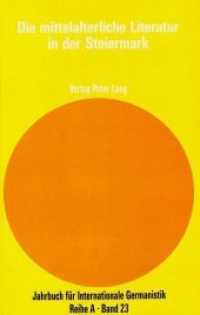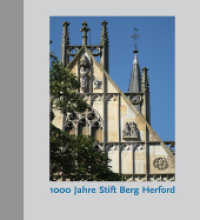Full Description
There is a critical need to prepare diverse teachers with expertise in science, technology, engineering, and mathematics (STEM) with the skills necessary to work effectively with underrepresented K-12 students. Three major goals of funded STEM programs are to attract and prepare students at all educational levels to pursue coursework in the STEM content areas, to prepare graduates to pursue careers in STEM fields, and to improve teacher education programs in the STEM content areas. Drawing upon these goals as the framework for Recruiting, Preparing, and Retaining STEM Teachers for a Global Generation, the 15 chapters contained herein highlight both the challenges and successes of recruiting, preparing, and sustaining novice teachers in the STEM content areas in high-need schools.
Recruiting, retaining and sustaining highly-qualified teachers with expertise in STEM content areas to work in hard-to-staff schools and geographic areas are necessary to equalize educational opportunities for rural and urban Title 1 students. High teacher turnover rates, in combination with teachers working out-of-field, leave many students without highly-qualified teachers in STEM fields. Most of the chapters in this volume were prepared by scholars who received NSF funding through Noyce and are engaged in addressing research questions related to these endeavours.
Contributors are: Lillie R. Albert, Cynthia Anhalt, Saman A. Aryana, Joy Barnes-Johnson, Lora Bartlett, Brezhnev Batres, Diane Bonilla, Patti Brosnan, Andrea C. Burrows, Alan Buss, Laurie O. Campbell, Phil Cantor, Michelle T. Chamberlin, Scott A. Chamberlin, Marta Civil, Lin Ding, Teresa Dunleavy, Belinda P. Edwards, Jennifer A. Eli, Joshua Ellis, Adrian Epps, Anne Even, Angela Frausto, Samantha Heller, Karen E. Irving, Heather Johnson, Nicole M. Joseph, Richard Kitchen, Karen Kuhel, Marina Lazic, Jacqueline Leonard, Rebecca H. McGraw, Daniel Morales-Doyle, Sultana N. Nahar, Justina Ogodo, Anil K. Pradhan, Carolina Salinas, David Segura, Lynette Gayden Thomas, Alisun Thompson, Maria Varelas, Dorothy Y. White, Desha Williams, and Ryan Ziols.
Contents
Preface
Acknowledgements
List of Figures and Tables
Notes on Contributors
PART 1: Teacher Recruitment in the stem Content Areas
1 Using stem Internships to Recruit Noyce Scholars into Elementary Education
Jacqueline Leonard, Scott Chamberlin, Saman A. Aryana, Marina Lazic and Anne Even
2 Stronger Together: The Arizona Mathematics Teaching (MaTh) Noyce Program's Collaborative Model for Secondary Teacher Preparation
Jennifer A. Eli, Rebecca H. McGraw, Cynthia O. Anhalt and Marta Civil
3 Noyce at Vanderbilt: Exploring the Factors That Shape the Recruitment and Retention of Black Teachers
4 Rise, Defy, Teach, and Lead: The enable stem Project
Justina Ogodo, Karen E. Irving, Patti Brosnan and Lin Ding
PART 2: Teacher Preparation in stem Education
5 Developing a Culturally and Linguistically Responsive Teacher Identity
Belinda P. Edwards, Desha Williams, Karen Kuhel and Adrian Epps
6 Supporting Noyce Scholars' Teaching of Mathematics in Rural Elementary Schools
Dorothy Y. White, Jacqueline Leonard, Michelle T. Chamberlin and Alan Buss
7 Building Computational Thinking: Design and Making in Teacher Education
Laurie O. Campbell and Samantha Heller
8 Teacher Preparation Programs, Teacher Diversity, and stem: Considering a "Race-Centered" Political Economy Perspective
Ryan Ziols
9 World Class stem Faculty: An International Dual-Degree Program
Karen E. Irving, Anil K. Pradhan and Sultana N. Nahar
PART 3: stem Teacher Mentoring and Retention
10 Negotiating Structures and Agency in Learning to Teach Science for Equity and Social Justice
David Segura, Maria Varelas, Daniel Morales-Doyle, Brezhnev Batres, Phillip Cantor, Diana Bonilla, Angela Frausto, Carolina Salinas and Lynette Gayden Thomas
11 Exemplary Mathematics Teachers for High-Need Schools: A Two-Way Mentoring Model
Lillie R. Albert
12 Becoming Equity-Minded stem Teachers through Mentoring and Internship Experiences
Joy Barnes-Johnson, Saman A. Aryana and Jacqueline Leonard
13 Retention through Community Building: Secondary Science and Math Noyce Scholars' Use of a Chat Room
Andrea C. Burrows
14 Seeking to Stay: Job Search Process and Teacher Retention
Lora Bartlett and Alisun Thompson
15 The Teacher Induction Network: Findings from over 10 Years of stem Teacher Induction
Joshua A. Ellis
Index







